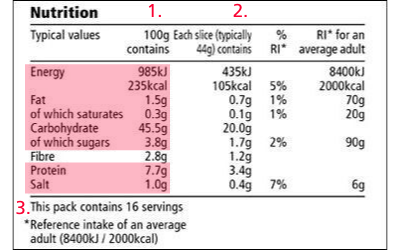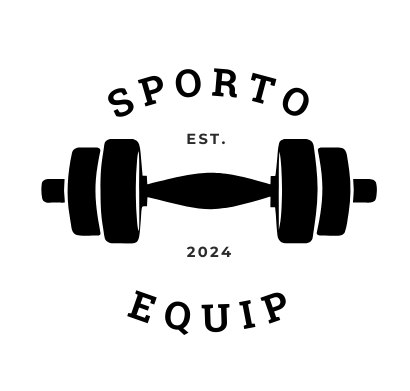
Presenting Nutritional Facts for a Healthier You
By: Sophie Jouliardt Published: 26 Sept 2023
Ever stared at a food label, feeling utterly perplexed? You’re not alone! Understanding nutritional facts can be as tricky as deciphering a secret code. But here’s the deal: cracking this code is your key to a healthier life.
In this blog, we’re going to unravel the mysteries behind those labels, the ones found on almost every packaged food item you buy. You’ll discover what those numbers and percentages mean, and how they can help you make smarter choices for your well-being.
Imagine effortlessly picking foods that align with your health goals, whether it’s shedding pounds, boosting energy, or simply feeling better. That’s the power of knowing how to read and use nutritional facts.
No more falling for misleading marketing tricks or struggling to make sense of complex data. We’re here to break it down into simple, actionable steps, so you can take control of your nutrition, one label at a time. Ready to embark on this journey to a healthier you? Let’s dive in!

The Basics of Nutritional Facts
Nutritional facts, those tiny panels on your food packages, might seem like hieroglyphics, but they’re your nutrition compass. They reveal what’s inside the box, bag, or can. At their core, they’re your guide to a healthier diet.
Picture them as a map, pointing you toward the nutrients you need and the ones you should limit. These labels give you the lowdown on serving sizes, calories, and the crucial trio: carbohydrates, fats, and proteins. Plus, they spill the beans on vitamins, minerals, and daily values.
So, why bother with these numbers? Well, they empower you to make informed choices. You’ll know what you’re eating, and that knowledge is your secret weapon for a healthier you. Ready to decode these labels like a pro? Let’s keep exploring.
Reading Nutrition Labels
Welcome to the captivating world of nutritional labels – those little charts and numbers that hold the key to healthier eating. Don’t be intimidated; we’re here to guide you through this label-reading adventure.

- Serving Size: Our journey begins with serving size. Think of it as the starting point for all the information that follows. It tells you how much of the food the rest of the label’s details are based on. Paying attention to this is vital because it sets the stage for everything else. For instance, if the serving size is half a cup, but you eat a full cup, you’ll need to double all the values on the label.
- Calories (kcal): Next up is the calorie count. This number tells you how much energy you’ll get from a single serving of the food. Knowing the calorie content helps you manage your daily energy intake, which is crucial for maintaining or achieving a healthy weight.
- Macronutrients: Now, let’s delve into macronutrients – the big players on the label. These are carbohydrates, fats, and proteins.
- Carbohydrates are your body’s primary source of energy. Pay attention to the total carbs and the dietary fibre content, which is a type of carb that’s good for your digestive health.
- Fats come in various forms. Saturated and trans fats are typically the ones you want to limit, as they can be harmful to your heart health. Unsaturated fats, like those found in avocados and nuts, are heart-healthy fats you should aim to include in your diet.
- Proteins are the building blocks of your body. They’re crucial for growth, repair, and overall well-being. Depending on your dietary goals, you may want to focus on protein content.
Understanding these components isn’t about memorising numbers but gaining the ability to make informed choices. Armed with this knowledge, you can select foods that align with your health goals, whether it’s managing your weight, supporting heart health, or simply feeling better.
Tailoring Nutrition to Your Goals
Now that we’ve mastered the art of reading nutrition labels, it’s time to unlock the true potential of this knowledge by tailoring your nutrition to your unique health goals.
Picture your goals as destinations on a map, and nutritional labels as your GPS. Whether you’re aiming to shed a few pounds, boost your energy, or take control of a specific health condition, understanding how to tweak your diet is key.
Weight Management
If your goal is to manage your weight, nutritional labels are your best friend. Pay close attention to portion sizes and calorie counts. Opt for foods that are lower in calories, especially if you’re on a calorie-restricted diet. Be mindful of macronutrients; balance carbs, fats, and proteins to keep you feeling full and satisfied.
Gaining Weight
For individuals aiming to gain weight, whether due to a naturally fast metabolism or specific health goals, focus on foods that offer higher calorie content while maintaining nutritional quality. Look for sources of healthy fats, lean proteins, and complex carbohydrates to provide the necessary energy and support muscle growth. Pay attention to portion sizes, especially if you’re working on muscle building through resistance training.
Heart Health
For those focused on heart health, keep an eye on saturated and trans fats, as well as sodium levels. Choose foods that are low in these heart-unfriendly ingredients. Foods rich in unsaturated fats, fibre, and antioxidants can help support your cardiovascular system.
Avoiding Common Pitfalls
While nutritional labels are invaluable tools, it’s easy to fall into common traps when interpreting them. One common pitfall is neglecting portion sizes; eating multiple servings can lead to unintended calorie intake. Beware of “health halo” foods that sound nutritious but may still be high in sugars or unhealthy fats. Relying solely on label claims like “low-fat” or “sugar-free” can be deceptive. Additionally, don’t ignore the ingredients list; it can reveal hidden additives or allergens. Staying vigilant and understanding that labels offer a snapshot of the bigger picture can help you make more informed and health-conscious choices.
Nutritional Facts Beyond Food Labels
Nutritional facts extend beyond packaged food labels. In the digital age, numerous resources and apps offer extensive databases of nutritional information, enabling you to explore the nutritional content of various foods and recipes. Here is a list of examples you can use to embark on your nutritional journey:
- MyFitnessPal: This popular app allows you to log your meals, scan barcodes, and track your daily intake of calories, macronutrients, and micronutrients.
- Nutracheck: Nutracheck is a UK-specific app that provides nutritional information for British foods, including supermarket brands and restaurant meals.
- Change4Life Food Scanner: This app, provided by Public Health England, allows users to scan barcodes and access nutritional information, including traffic light labels, for popular UK products.
- Fitbit: Fitbit’s app includes features for tracking food intake, monitoring physical activity, and setting health and fitness goals.
- Yazio: Yazio is available for users in the UK and offers personalised meal planning, calorie tracking, and nutritional insights.
These tools allow you to track your daily intake, making it easier to monitor and adjust your diet to meet your health goals.
Conclusion
In conclusion, unlocking the power of nutritional facts is your key to a healthier, more informed, and empowered lifestyle. From deciphering food labels to tailoring your nutrition to meet specific health goals, you’ve embarked on a journey towards better well-being. Remember, knowledge is your greatest ally, enabling you to make conscious choices that align with your aspirations. Whether you’re managing your weight, caring for your heart, or pursuing a healthier lifestyle, the wisdom gained from nutritional labels goes a long way. So, armed with this knowledge, take charge of your nutrition, one label at a time, and let it guide you towards a healthier, happier you.
Make sure to check out our other articles on Nutrition: The Vital Role of Nutrition in Achieving Fitness Goals and Navigating 2023’s Food Trends: Unveiling the Best Diets for Your Health!
